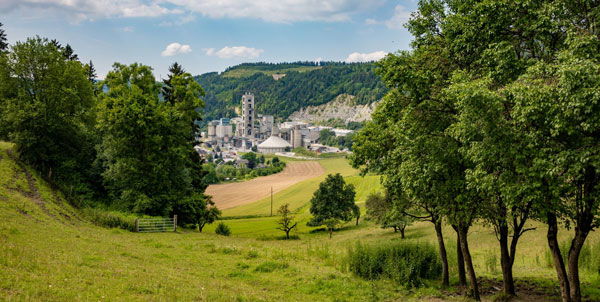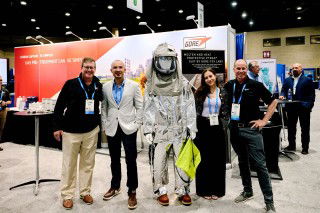Environmental Excellence – w&p Zement GmbH

Company representative
Florian Salzer, Plant Manager, Wietersdorf, w&p Zement GmbH (Austria)
Company description
Part of the ALPACEM Group, w&p Zement is a privately-owned cement producer. Its main production facility is the Wietersdorf plant, a 2200tpd state-of-the-art facility built in 2005 and located in southern Austria. The plant currently produces 17 types of cement and three types of clinker. The company also runs a cement mill in Peggau, Austria, along with operations in Slovenia and Italy.
Project description
w&p Zement has invested more than EUR16m in a number of projects and innovations in a bid to become the most environmentally friendly cement operation in the world. These projects include developing and installing an XMercury emission reduction system, replacing baghouse filters, installing an RTO system, optimising the SNCR system, and a CO2 reduction programme to maximise the cement/clinker factor. A further EUR9m has been earmarked to expand the company’s hydropower facilities to meet up to 25 per cent of the plant’s energy needs.
1. SO2 reduction system
Ten years ago, the company installed an SO2 reduction system to produce low-grade hydrated lime from calcined raw meal being withdrawn from the lowest cyclone stage. Sustained SO2 emissions below 50mg/Sm3 (daily average) were achieved. Compared to using externally-purchased hydrated lime to reduce SO2 emissions, the new system also saved CO2 emissions as no transport or handling activities were required to deliver the reduction agent.
2. XMercury emission reduction system
In 2015 an XMercury emission reduction system was introduced at the plant, in partnership with Scheuch and ATEC. Integrated into the plant’s preheater tower, the system is able to separate up to 80 per cent of the input mercury coming from the raw materials and fuels. The system continuously withdraws the kiln filter dust from the clinker production lines to reduce the mercury concentration, lowering emissions.
3. New baghouse filter
In 2017 the company invested in a new baghouse filter, equipped with 10m filter bags, which continuously operates at below 5mg/Sm3 (total emission reduction of approximately 70 per cent) to prevent blockages in the ceramic heat exchanger blocks of the Scheuch DeCONOx system, installed in the same year. Using a low energy cleaning system for the filter bags, as well as optimising the exhaust gas duct system, w&p Zement was able to reduce the electrical energy consumption of the clinker line by more than 10 per cent.
From day one, the Scheuch DeCONOx system reduced VOC and CO emissions by more than 90 per cent. The emission reduction occurs by heating up the gas stream after the main filter to 850°C for more than two seconds. Due to the heat exchanging system of the DeCONOx, only the heat loss has to be covered. The required energy is mainly provided by combusting the CO and VOC provided by the production process.
4. Optimising the SNCR system
As the existing SNCR system has been in place since 2011, an optimisation project was initiated in 2017, testing different injection locations, nozzles and nozzle-cleaning systems. Using the reduction agent urea, NOx emissions were reduced to below 200mg/Sm3.
5. Reducing the carbon footprint
On the back of previous investments, which have seen the alternative fuel rate advance to 85 per cent, in 2017 w&p Zement launched a project to source fuels with a higher content of biogenic CO2, including non-recyclable wood, and cardboard residuals or paper rejects. By producing 17 different cements and binders, from CEM I to low clinker CEM III, the company is able to keep the carbon footprint of the Wietersdorf plant well below the Austrian average of 563kg of CO2 per ton of cement.
6. Hydropower projects
Over the next few years, a number of additional technical optimisation projects are planned to reduce the plant’s consumption of primary fuels such as coal, and the electrical energy consumption, saving additional CO2. The next project, starting in 2020, is the extension of the company’s own hydropower plants. One of the existing power plants will be optimised while another two are being built to meet 25 per cent of the plant’s energy needs.
"The Environmental Excellence Award has now confirmed to us that we are on the right track and it will drive us to continue to work as diligently to reduce our environmental footprint whilst maintaining the same high quality of our products. We are proud and very happy to have prevailed amongst so many outstanding international companies," said the company in a statement.
